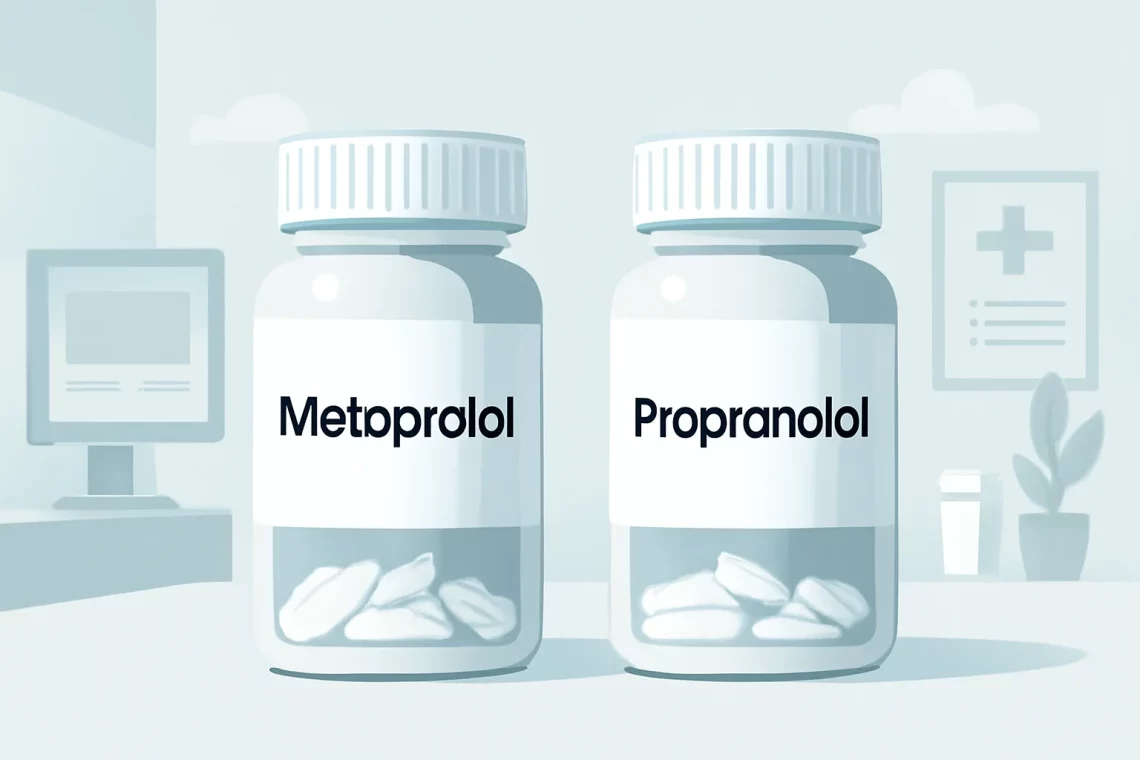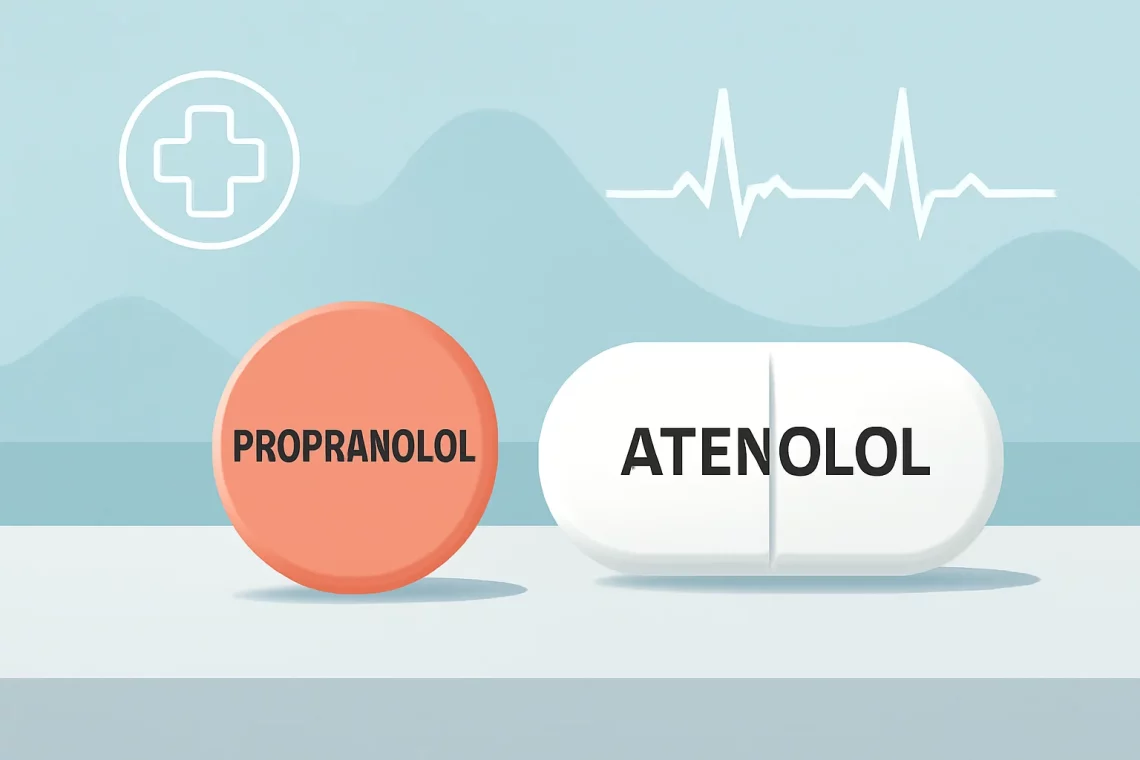-
Entresto vs Ramipril: Which Heart Failure Treatment is Better?
Heart disease remains one of the leading causes of morbidity and mortality worldwide. As healthcare continues to evolve, so do the treatment options available to patients struggling with cardiovascular issues. Among the various medications prescribed, Entresto and Ramipril have emerged as two prominent choices for managing heart failure and hypertension. Both medications serve critical roles in treating cardiovascular conditions, yet they operate through different mechanisms and offer distinct benefits and potential side effects. Understanding the nuances between these two drugs is essential for patients and healthcare providers alike. Each medication has its unique composition, dosing strategies, and indications, making it vital to grasp how they compare in effectiveness and safety.…
-
Amoxicillin vs Keflex Understanding Their Uses and Differences
Amoxicillin and Keflex are two widely used antibiotics that play crucial roles in treating bacterial infections. Both medications belong to different classes and have distinct mechanisms of action, making them suitable for specific types of infections. Understanding the differences between these two antibiotics is vital for both healthcare professionals and patients. In recent years, there has been an increasing focus on antibiotic resistance, leading to the need for informed decisions regarding antibiotic prescriptions. Patients often find themselves asking about the most effective treatment options for their conditions. With this growing awareness, it’s essential to clarify what amoxicillin and Keflex are, how they work, and when each medication is appropriate. This…
-
Wellbutrin vs Effexor XR: Which Antidepressant Is Right for You?
Depression and anxiety disorders are prevalent mental health issues that affect millions of individuals globally. As the understanding of these conditions evolves, so too does the approach to treatment. While therapy often plays a vital role in managing mental health, pharmacological interventions are commonly employed to help alleviate symptoms. Among the various medications available, Wellbutrin and Effexor XR are two options frequently prescribed by healthcare professionals. Each medication functions differently within the body and is designed to address distinct aspects of mental health disorders. Wellbutrin, generically known as bupropion, is primarily used to treat major depressive disorder and seasonal affective disorder. It is unique in its mechanism of action, as…
-
Metoprolol vs Propranolol: Key Differences and Uses Explained
Metoprolol and propranolol are two widely prescribed medications belonging to the class of drugs known as beta-blockers. These medications are primarily used to manage various cardiovascular conditions, such as hypertension, angina, and arrhythmias. However, their mechanisms of action, therapeutic applications, and side effect profiles differ significantly, making them suitable for different patient needs. Understanding these differences is crucial for both healthcare professionals and patients, as it can influence treatment efficacy and safety. Beta-blockers work by blocking the effects of adrenaline on beta-adrenergic receptors, leading to a decrease in heart rate and blood pressure. This class of drugs is beneficial not only for heart-related issues but also for other conditions such…
-
Propranolol vs Atenolol Which Beta Blocker is Right for You
Propranolol and atenolol are both medications belonging to a class known as beta-blockers. These drugs are commonly prescribed for various cardiovascular conditions, including hypertension, angina, and arrhythmias. Beyond their primary uses, beta-blockers have gained attention for their effectiveness in managing anxiety and migraine prophylaxis. As they work by blocking the effects of adrenaline on the beta-adrenergic receptors, they can significantly reduce heart rate and lower blood pressure, leading to improved overall cardiovascular health. Despite their similarities, propranolol and atenolol differ in their specific mechanisms of action, side effects, and therapeutic applications. Understanding these differences can help patients and healthcare providers make informed decisions about which medication is best suited for…
-
Propranolol vs Atenolol: Which Beta-Blocker Is Right for You?
Propranolol and Atenolol are two widely prescribed medications that belong to the class of drugs known as beta-blockers. These medications are primarily used to manage various cardiovascular conditions, such as hypertension, angina, and arrhythmias. They can also be effective in treating other conditions, including anxiety and migraine prevention. Both drugs work by inhibiting the effects of adrenaline on the body’s beta receptors, which leads to a decrease in heart rate and blood pressure. Despite their similarities, Propranolol and Atenolol possess distinct pharmacological properties and clinical applications that can influence a physician’s choice of treatment. Understanding these differences is essential for patients and healthcare providers alike, as it can significantly impact…
-
Albuterol vs Salbutamol: Understanding Their Differences and Uses
Albuterol and salbutamol are two medications widely used in the treatment of respiratory conditions, particularly asthma and chronic obstructive pulmonary disease (COPD). Both drugs serve as bronchodilators, which means they work by relaxing the muscles in the airways, allowing the airways to open up more fully, thereby easing breathing. Despite their similar functions, there are distinct differences between the two that can affect their usage, effectiveness, and overall patient experience. Understanding these differences is crucial for anyone managing a respiratory condition or considering treatment options. In the realm of respiratory medications, the choice often boils down to personal preference, specific health needs, and physician recommendations. Factors like how quickly the…
-
Cymbalta vs Paxil: Comparing Two Popular Antidepressants
The landscape of mental health treatment has evolved significantly over the years, with a variety of medications available to help individuals manage conditions such as depression and anxiety. Among these medications, Cymbalta and Paxil have gained considerable attention for their effectiveness in treating mood disorders. While both of these drugs belong to different classes of antidepressants, they are often compared due to their similar applications and potential side effects. Cymbalta, known generically as duloxetine, is a serotonin-norepinephrine reuptake inhibitor (SNRI) that is commonly prescribed for depression, generalized anxiety disorder, and chronic pain management. Paxil, or paroxetine, is a selective serotonin reuptake inhibitor (SSRI) that is primarily used to treat major…
-
Amoxicillin vs Cephalexin: Which Antibiotic is Right for You?
In the realm of modern medicine, antibiotics play a crucial role in combating bacterial infections. Among the numerous antibiotics available, Amoxicillin and Cephalexin are two commonly prescribed options. Both of these medications belong to different classes of antibiotics and have their unique mechanisms of action, effectiveness against various bacterial strains, and potential side effects. As the rise of antibiotic resistance continues to be a pressing global health issue, understanding the differences and similarities between these two antibiotics can help patients make informed decisions about their treatment options. Patients often find themselves navigating a confusing landscape of medical terminology and treatment protocols. As they seek relief from infections, they may encounter…
-
Xanax vs Vistaril: Understanding Their Uses and Differences
Anxiety and panic disorders have become increasingly common in today’s fast-paced world, leading many individuals to seek relief through medication. Among the various treatments available, Xanax and Vistaril are two medications frequently discussed in the context of anxiety management. Both have unique properties and mechanisms of action, making them suitable for different patient needs and circumstances. Xanax, a well-known benzodiazepine, is primarily prescribed for the treatment of anxiety disorders and panic attacks. It works by enhancing the effects of a neurotransmitter called gamma-aminobutyric acid (GABA), which helps to calm excessive brain activity. On the other hand, Vistaril, an antihistamine with anxiolytic properties, is often used not only for anxiety but…







































